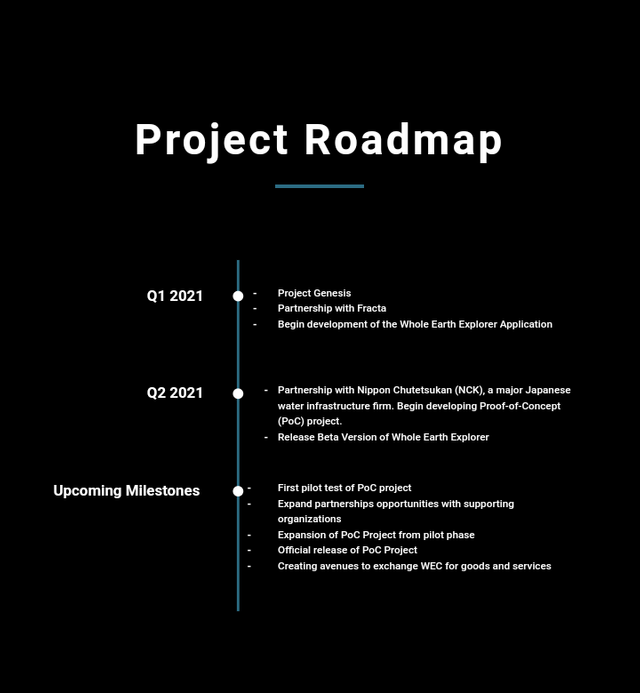Whole Earth Foundation
Democratize Infrastructure Management

Cryptocurrency was originally known as a payment system that allows people to be able to make transactions quickly, without third parties, in a transparent, secure and anonymous manner. Satoshi, who is the creator of Bitcoin, made Bitcoin defeat a centralized financial system that is prone to manipulation and is controlled by one party. With the growth and development of the Crypto or blockchain ecosystem, a number of alternative investment options have emerged, and have proven to be more efficient and profitable investment tools than traditional financial returns. Innovative projects consistently appear in the crypto industry with high return investments and a continuous trend, such as Whole Earth Foundation is one project that will attract large market investments. Why? because this project aims to create a safe and decentralized working model, as well as a new breakthrough NFT project. Whole Earth Foundation is the project you’ve been waiting for. so we just discuss it below.
Infrastructure is increasingly aging worldwide as societies across the world face challenges of deterioration and inefficient management. In developed countries such as the U.S., it is estimated that as much as 2 trillion dollars (USD) will need to be spent on infrastructure over the next five years.1 In European Union, numbers are similarly high as an estimated 688 billion euros per year (or around 804 billion USD) are required per year for energy needs, transportation, water and sanitation, and telecoms.2 Across the globe as a whole, it is estimated that infrastructure investment comes out to be around 3.9–9.7% of the total world GDP.
Technology in this sector in recent years, however, has led to significant developments. With the emergence of big data and artificial intelligence, more companies are utilizing technology to gain actionable insight from data, enabling early detection of infrastructure problems, data-driven recommendations for better management planning, and several other projects aimed towards creating smarter cities.
Yet, despite the availability of tools, change has been slow in the real world. Many infrastructure projects have resisted adopting technology despite its delivered value. The World Economic Forum reports that these issues stem from a wide array of factors such as “corruption to overbearing bureaucracy to under-skilled labour forces” and that this field remains one of the “least digitally transformed in the entire global economy.
Upon examination of this problem, we believe there are two fundamental factors are responsible for this phenomenon
- Imbalanced access to information between Infrastructure service providers and citizens
- The lack of general incentive among parties to challenge the status quo
The Whole Earth Foundation was established as a Non-Profit Organization with the goal of democratizing infrastructure management. We aim to accomplish this by making information about the status of the infrastructure more accessible and visible to the general public. By connecting general citizens and infrastructure service providers through an ecosystem of applications powered by the Whole Earth Platform, we plan to equip citizens with information and an incentive to voice their needs to service providers. Service providers can then communicate with their citizens and work on improving the infrastructure they manage.

The environmental database, which is at the core of the Foundation, contains extensive information about the environment and infrastructure. Over time, this database will grow and scale up to become more advanced through information contributed by the participants (mainly general citizens) of the ecosystem. Thanks to blockchain technology, participants can benefit from collecting and contributing data by earning a digital token called Whole Earth Coin (WEC). For each data point contributed, the value of earned WEC tokens will fluctuate based on its type and quality of data. For example, participants could describe or take pictures to capture the conditions of infrastructure such as:
Manholes
Roads
Bridges
Electric Polls
Water Pipe Leakages
All reports will be geographically traceable by their GPS coordinates and linked with other variables that can be measured at that time. In doing so, we hope to capture the important dynamic trends and status of infrastructure that evolves, accurately capturing real-world conditions of our infrastructure.
Future partners that wish to collaborate on projects with the Foundation or utilize the database will pay a subscription fee to retain a partnership with the Foundation. The Foundation will then use these funds to purchase WEC’s to pay for project developmental costs.
As the project develops, we plan to form strategic partnerships with various organizations and create new ways to utilize the WEC token within the ecosystem. One utility would be to coordinate with market partners to develop avenues to use WEC tokens for goods and services.
ROADMAP

Team
Daiki Moriyama
Hiroaki Sengoku
Koki Sasagawa
Takashi Kato
Yumiko Nishimura
Kengo Nakajima
Jordan Breslow
Luan Do Thanh
Tuan Anh Dao
Manh Tuan Hoang
CONCLUSION
Preserving and Creating Resources
An important part of implementing this approach is a method for measuring the value of the information provided. We hope you have enjoyed the introduction of our project. For more information and updates on the project, please follow our website. We also regularly provide information on social media
For More Information Click Links Bellow:
- Website: https://wholeearthfoundation.org/
- Whitepaper: https://wholeearthfoundation.org/whitepaper.html
- Telegram: https://t.me/WholeEarthFoundation
- Facebook: https://www.facebook.com/WholeEarthFoundation
- Twitter: https://twitter.com/WholeEarthFdn
Author: pangeran milano
My Bitcointalk Profile: https://bitcointalk.org/index.php?action=profile;u=2577205;
ETH Address: 0x37a0B0C2c66588Aa83cA4d1367B409C78704738b
Komentar
Posting Komentar